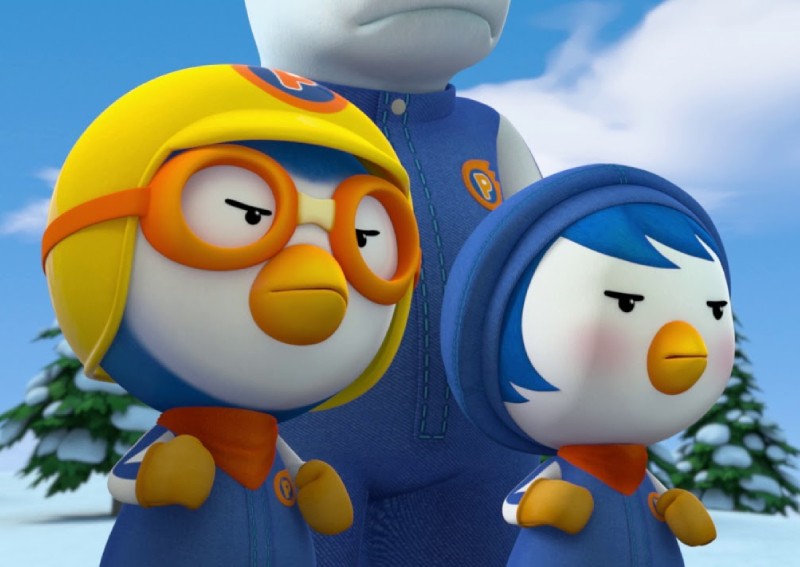Cartoons have long been an integral part of children’s entertainment, captivating young minds with their colorful animations and engaging storylines. But beyond their entertainment value, kids cartoons have a profound impact on a child’s development. From fostering educational growth to promoting social skills, these animated shows play a vital role in shaping young minds.
How Kids Cartoons Influence Children’s Development
Kids cartoon hold a significant influence on various aspects of a child’s development, including their cognitive, emotional, and social growth. Let’s explore the different ways in which these animated shows leave a lasting impression on young viewers.
The Educational Value of Kids Cartoons
Educational content is a fundamental aspect of many kids cartoon today. Shows like “Sesame Street” and “Dora the Explorer” are renowned for their ability to teach essential skills, such as counting, problem-solving, and basic literacy. Through engaging characters and interactive elements, these shows make learning enjoyable and accessible for children.
Positive Social Impact of Kid Cartoons
Kids cartoon can also have a positive impact on a child’s social development. Animated series often depict characters navigating various social situations, teaching children valuable lessons about empathy, friendship, and teamwork. Shows like “Arthur” and “Daniel Tiger’s Neighborhood” emphasize the importance of kindness and cooperation, providing children with valuable social cues.
Popular Kids Cartoons
The world of kid cartoons is vast and diverse, encompassing both classic and modern shows that have shaped generations. Let’s explore some popular examples from each category.
Classic Kids Cartoons
Classic kids cartoons, such as “Tom and Jerry” and “Looney Tunes,” have entertained children for decades. These timeless shows continue to bring laughter and joy to both young and old audiences, standing as a testament to the enduring appeal of animation.
Modern Kids Cartoons
Modern kids cartoons have evolved with the times, incorporating contemporary themes and technological advancements. Shows like “Peppa Pig” and “Paw Patrol” have gained immense popularity, captivating children with their relatable characters and engaging narratives.
Impact of Kids Cartoons on Language Development
Language development is a crucial aspect of a child’s growth, and kids cartoons can significantly contribute to this process. Here’s how these animated shows can enhance vocabulary and language skills while promoting multilingualism.
Enhancing Vocabulary and Language Skills
Kids cartoons often introduce children to new words and concepts in an engaging and memorable way. Through repetition and contextual storytelling, these shows help expand a child’s vocabulary and improve their language skills. The use of songs and rhymes further aids in language development, making learning enjoyable and immersive.
Promoting Multilingualism
In an increasingly globalized world, exposure to different languages is becoming more valuable. Many kids cartoons incorporate multiple languages, introducing children to diverse linguistic elements. Shows like “Dora the Explorer” encourage language exploration by incorporating basic Spanish phrases, fostering an early appreciation for multilingualism.
Psychological Benefits of Kids Cartoons
Apart from educational and linguistic advantages, kid cartoons also offer various psychological benefits to young viewers. Let’s explore how these shows contribute to emotional and cognitive development while teaching moral values and problem-solving skills.
Emotional and Cognitive Development
Kids cartoon often tackle emotional themes, helping children understand and express their own feelings. Characters facing challenges and resolving conflicts can provide valuable insights into emotional intelligence. Additionally, cartoons that stimulate cognitive abilities through puzzles, memory games, and critical thinking exercises contribute to overall mental development.
Teaching Moral Values and Problem-Solving
Kids cartoons often incorporate moral lessons and ethical dilemmas, teaching children right from wrong. By presenting characters making difficult choices and resolving conflicts, these shows encourage critical thinking and problem-solving skills in young viewers. This aspect of kid cartoons helps children develop a sense of empathy and moral reasoning.
Balancing Screen Time and Kids Cartoons
While kids cartoons can provide educational and entertainment benefits, it’s essential to maintain a healthy balance when it comes to screen time. Here are some strategies to ensure that children enjoy the benefits of kids cartoons while engaging in other activities.
Setting Limits and Monitoring Content
Parents and caregivers play a crucial role in regulating screen time for children. By setting limits on daily viewing hours and selecting age-appropriate content, parents can ensure that kid cartoons are part of a balanced media diet. It’s important to stay aware of the content children consume and ensure it aligns with their developmental needs.
Encouraging Interactive Play and Physical Activity
To ensure children have a well-rounded childhood, it’s vital to encourage interactive play and physical activity alongside screen time. Engaging in imaginative play, outdoor activities, and hobbies promotes holistic development and fosters creativity and social skills beyond the screen.
The Role of Parents and Caregivers
Parents and caregivers have a significant influence on a child’s experience with kid cartoons. Here are some ways they can actively engage and support their child’s learning and development through animated shows.
Engaging with Kids Cartoons
By watching kids cartoon with their children, parents can actively engage in the viewing experience. This provides an opportunity for discussion, reflection, and reinforcement of the positive values and educational messages portrayed in the shows. Asking questions, sharing thoughts, and participating in related activities can make the viewing experience more enriching.
Facilitating Learning and Discussion
Parents can take a proactive role in facilitating learning beyond the screen. By connecting the themes and lessons from kids cartoons to real-life situations, parents can help children apply what they have learned. Engaging in discussions about characters’ choices, conflicts, and resolutions enhances critical thinking and reinforces moral values.
FAQs
Q: Are all kids cartoons educational?
Not all kids cartoons are explicitly educational, but many incorporate educational elements into their content. Shows specifically designed for educational purposes often focus on teaching academic and life skills, while other cartoons may emphasize entertainment with subtle educational elements.
Q: How much screen time should children have?
The American Academy of Pediatrics recommends that children aged 2 to 5 should have no more than one hour of high-quality screen time per day. However, it’s important to consider individual circumstances and ensure that screen time is balanced with other activities that promote physical, social, and cognitive development.
Q: Can kids cartoons have a negative impact?
While kids cartoon generally have positive effects on children’s development, excessive or inappropriate exposure to certain shows can have negative impacts. It’s crucial for parents to monitor the content their children watch, ensure age-appropriate material, and maintain a balanced media diet.
Q: Should parents restrict access to certain kids cartoons?
Parents should assess the content of kids cartoons to determine what is appropriate for their child’s age, values, and developmental needs. Some shows may contain themes or messages that are not suitable or aligned with a family’s beliefs or values. It’s important for parents to make informed decisions and select content that aligns with their preferences.
Q: What are some tips for choosing appropriate kids cartoons?
When selecting kids cartoon, parents can consider factors such as age-appropriateness, educational value, positive role models, and positive messages. Reading reviews, consulting trusted sources, and previewing episodes before allowing children to watch can help parents make informed choices about the content their children consume.
Conclusion
Kids cartoons are more than just a form of entertainment; they significantly impact children’s development. From fostering educational growth and language development to promoting social skills and psychological well-being, these animated shows play a crucial role in shaping young minds. By balancing screen time, actively engaging with kids cartoons, and providing guidance, parents and caregivers can harness the positive benefits of these shows while fostering a well-rounded upbringing for their children.



